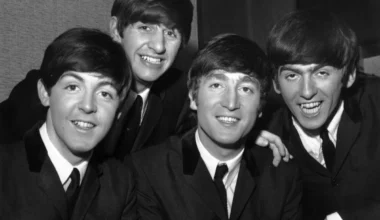In 1967, The Rolling Stones ventured into uncharted territory with Their Satanic Majesties Request, a psychedelic album released just months after The Beatles’ iconic Sgt. Pepper’s Lonely Hearts Club Band. While The Beatles received acclaim for their experimental approach, The Rolling Stones found themselves in unfamiliar waters, straying far from the blues-driven sound that defined them. This foray into psychedelia left a mixed legacy and became a source of regret for the band, particularly for guitarist Keith Richards.
Known for his blunt honesty, Richards has never shied away from criticizing his own work, especially Their Satanic Majesties Request. While the record attempted to capitalize on the psychedelic trends of the 1960s, Richards and other members of the band have since admitted that the project felt forced and inauthentic.
Richards once noted, “If you’re The Beatles in the ’60s, you just get carried away—you forget what it is you wanted to do. You’re starting to do Sgt. Pepper. Some people think it’s a genius album, but I think it’s a mishmash of rubbish, kind of like Satanic Majesties—‘Oh, if you can make a load of [nonsense], so can we.’”
Despite the album’s vibrant and experimental cover, many critics and fans view Their Satanic Majesties Request as a misstep, contrasting sharply with the blues-infused essence that made The Rolling Stones legendary. Richards has said that while he can appreciate tracks like “2000 Light Years from Home” and “She’s a Rainbow,” most of the album “was a load of crap,” adding that these are the only songs from the record that the band has consistently performed live. This self-assessment hints at the Stones’ realization that they had strayed too far in their attempt to compete with the Fab Four.
Even Mick Jagger shared a similar sentiment, dismissing the album as “nonsense.” He and Richards later agreed that the album’s creation was more a product of external pressures and competition with The Beatles than of genuine artistic drive. In hindsight, they recognized that trying to emulate another band’s sound—especially one as distinct as The Beatles—was a mistake. For The Stones, it was a deviation from their strengths and a step away from their musical identity.
The chaotic environment in the studio added to the album’s disjointed outcome. Bassist Bill Wyman recalled in his memoir how sessions for Their Satanic Majesties Request often descended into chaos, with numerous friends and girlfriends filling the studio.
“Every day at the studio it was a lottery as to who would turn up and what—if any—positive contribution they would make when they did,” Wyman wrote. “Keith would arrive with anywhere up to ten people, Brian with another half-a-dozen, and it was the same for Mick. They were assorted girlfriends and friends. I hated it!”
While Their Satanic Majesties Request may have missed the mark, it served as a valuable lesson for the band. The Rolling Stones soon returned to their roots with Beggars Banquet, a gritty, blues-heavy album that reestablished their sound and firmly planted them back on course. The contrast between these two records highlights the band’s journey and their eventual understanding that staying true to their musical roots was essential to their success.
Looking back, Their Satanic Majesties Request stands as a testament to the dangers of chasing trends over authenticity. Although it didn’t achieve the same acclaim as other albums of the era, it remains an interesting artifact of The Rolling Stones’ evolution—a reminder of the brief period when they tried on another band’s style, only to find their way back to their own.
The lesson they took away has resonated ever since: authenticity trumps imitation in the world of rock, and for The Rolling Stones, the blues was where they belonged.








